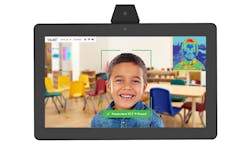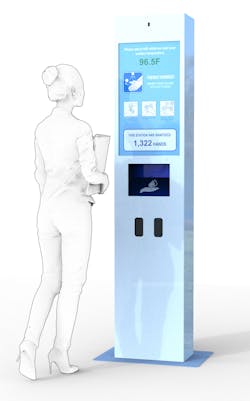This article originally appeared in the September 2020 issue of Security Business magazine. When sharing, don’t forget to mention @SecBusinessMag on Twitter and Security Business magazine on LinkedIn.
The word of the day all over the world is contactless. In order to minimize the spread of COVID-19, people have been encouraged to limit their amount of touchpoints – especially in public settings – as much as possible. To illustrate this point, a recent NRF survey found that 67 percent of retailers now accept some form of no-touch payment. That includes 58 percent that accept contactless credit cards that can be waved past or tapped on a reader – up from 40 percent last year; and 56 percent take digital wallet payments on mobile phones, up from 44 percent.
Thankfully, contactless technology is right in a security integrator’s wheelhouse. That said, the increased emphasis on contactless and touch-free solutions has led to the introduction of tons of new products by enterprising vendors within and adjacent to the security market.
Here is a quick look at a few of those innovations:
Door Opening: One area that should be familiar to anyone in the security industry is no-touch door opening solutions. A variety of access control manufacturers have been producing these products – which can reduce hand-to-door contact in public areas – for years. UsersMobile Credentials: This is another area where security manufacturers have created innovative and touch-free solutions. Prodatakey is an example, as its new touch reader product automatically senses encrypted credentials on locked phones – even when they are deep inside pockets or purses. With the product, credentialed users to simply wave their hand within 2-3 inches of the reader in order to indicate an intent to enter. “The result is a touch-free, hassle-free walk-through experience that requires no contact with phone nor reader,” the company says.
Video intercoms: So common in front of schools, apartment complexes and office buildings, one drawback of traditional video intercoms in this environment is that most have a pushbutton to initiate aAlarm Panels: There are opportunities for security integrators that go well beyond door opening when it comes to contactless technology solutions. DMP, for example, has introduced new firmware for some of its touchscreen alarm control panels with built-in readers that enables customers to arm or disarm their systems without touching their screens to enter passcodes. Users simply present a credential to the keypad’s built-in reader to arm the system. Voice-controlled alarm arm/disarm is another viable option for integrators.
Temperature Screening: “Businesses are grappling with choosing temperature check products that don't induce anxiety or put people at greater risk of exposure,” Cindy Cheung, COO for tablet maker Glory Star. “The idea for (the) TAURI (product) came to us after going out to eat and realizing how threatening gun-style readers are when they are aimed at you. They also require extremely close contact with the operator.”The TAURI Temperature Check Tablet is a normal-looking tablet with a temperature screening device mounted on top. The device is touchless for customers and can even include facial recognition and mask detection. “Because people are accustomed to tablets in their daily lives, it makes temperature screening a more positive, calm, and familiar experience,” Cheung says.
Wellness Kiosks: Temperature and mask checks are two of the many visitor screening and wellness aspects that businesses are faced with; however, many of those businesses lack the manpower to do so. This is where self-service kiosks are proving to be a difference maker for security customers.
One example would be LG’s new Wellness Kiosks – a solution to provide both information and health equipment to customers in a physical store environment without the use of an attendant. The system includes a thermal scanner for temperature readings integrated with a 22- or 32-inch digital signage display for displaying health information. The kiosk includes a motion-activated hand sanitizer dispenser along with slots to hold boxes of gloves or masks. It even tracks how many people are using the hand sanitizer.
Interactive Digital Information Stations: Additionally, LG has also attempted to solve the problem of touchscreen digital signage popular inContactless Sales: Finally, security salespeople accustomed to face-to-face meetings and walkthroughs can count on several vendors who have come up with solutions to enable successful contactless sales meetings. WeSuite, for example, has added virtual site surveys to its sales software, as well as digitally created and signable contract documents. The site surveys enable salespeople to share their screen in a video call to simulate site walk-throughs.
Paul Rothman is Editor in Chief of Security Business magazine.








